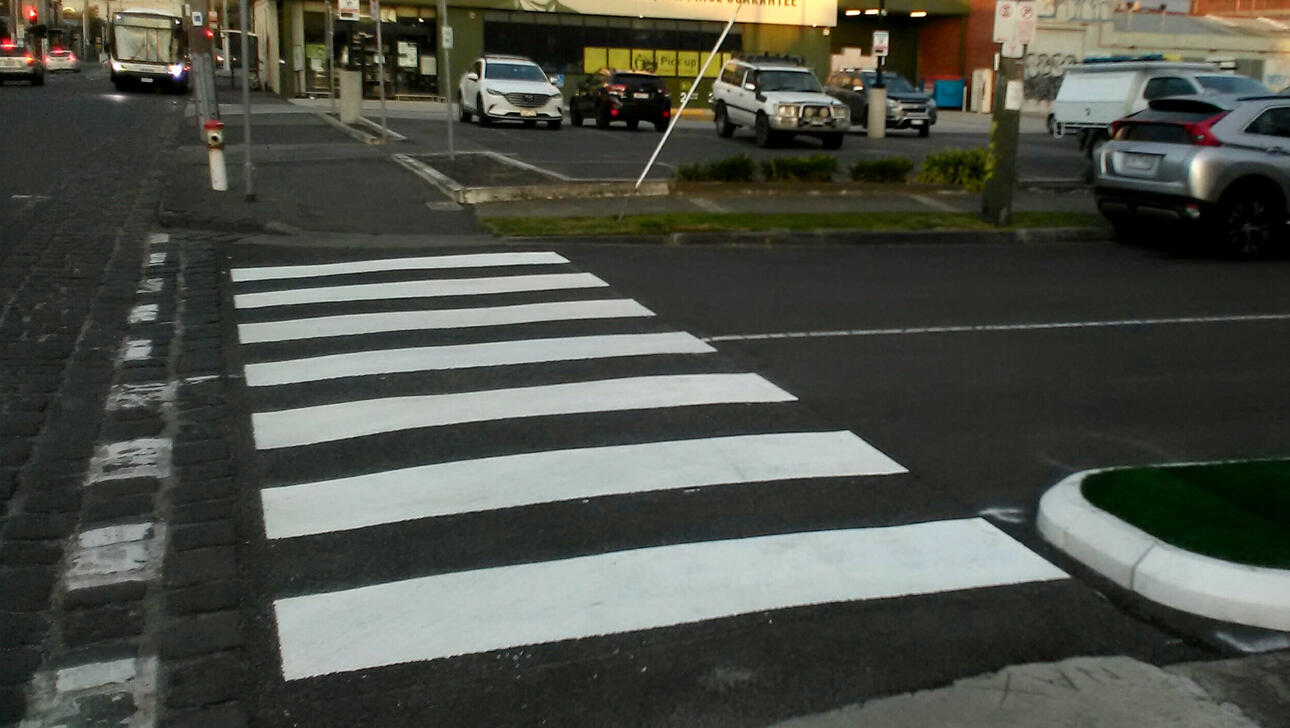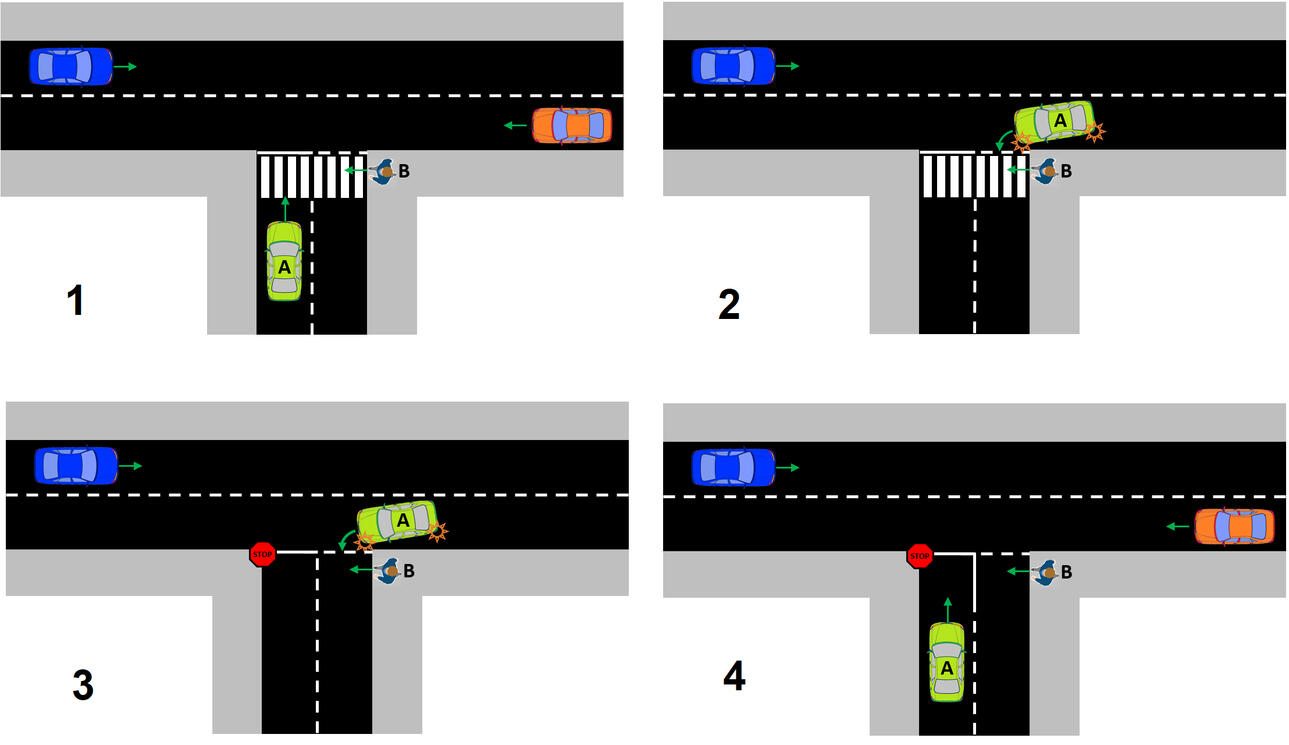Zebra crossings at T-intersections

A Research project to create evidence about the effect, on walkability, of zebra crossings at T-intersections.Contact Dr Geoff Browne, the University of Melbourne: geoffrey(dot)browne(at)unimelb(dot)edu(dot)auThis project has human research ethics approval from The University of Melbourne [23530].
Stage 1 - Community survey
Stage one surveyed over 1000 people about their knowledge of the road rules at T-intersections, both with and without a zebra crossing.Example survey question: According to the road rules, who should give way in each of the following scenarios, the green car (A) or the pedestrian (B) ?

ANSWERS!
1: A - 98.8% of respondents answered correctly
2: A - 97.0% of respondents answered correctly
3: A - 60.0% of respondents answered correctly, 37.2% incorrectly
4: B - 58.4% of respondents answered correctly, 39.1% incorrectlyThese results show that a high percentage of respondents were not aware of the road rules pertaining to T-intersections (scenarios 3 & 4). This suggests the rules are counterintuitive for many people. Installation of a zebra crossing significantly compensates for this lack of awareness and eliminates the ‘counter-intuivity’.With regards to drivers stopping at the stop line, the majority of respondents felt that a zebra crossing is an efficient way of creating pedestrian priority in the face of 353(1)b.While most respondents rated zebras at T-intersections well for ‘encouraging walking for transport’ and ‘creating safety at intersections where it is implemented’, most also rated them poorly for creating safety at other similar nearby sites, agreeing that ‘the installation could suggest that at other T-intersections (i.e., without a zebra), drivers do not have to give way to pedestrians crossing the road the driver is turning into’.With regards to drivers stopping at the stop line, the majority of respondents were of the opinion that this treatment is a good way of creating pedestrian priority. Simultaneously however, a majority of respondents felt that Rule 353(1)b should be changed to require drivers at a stop line (with no zebra) to give way to pedestrians crossing the road.
Stage 2 - Expert interviews
Interviews with fourteen traffic engineers, other transport and planning professionals and transport advocates were conducted in early 2022. Once the interviews are analysed, a summary of results will be published here.
Stage 3 - publishing the results
Once data analysis is complete, the next steps are write up and publication of the results in an academic journal. Results and their implications will also be shared with local and state government, and recommendations for improving policy and practice, in ways that improve walkability, will be made.
Contact
Dr Geoff Browne B.B.Sc., M Soc. Sci., MPHAA
Faculty of Architecture, Building & Planning
The University of Melbourne
Australia
Zebra crossings at T-intersections by Geoff Browne is licensed under a Creative Commons Attribution-NonCommercial-NoDerivatives 4.0 International License.